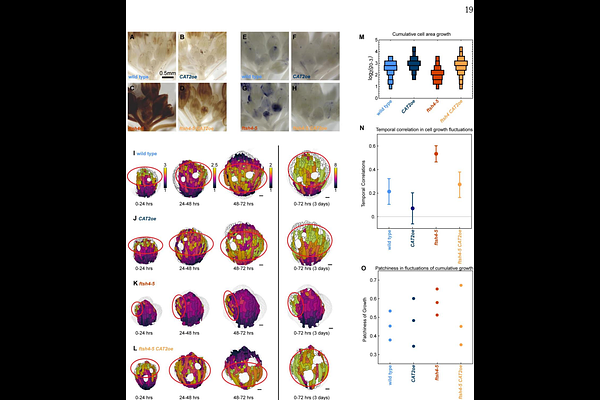ROS inhibits microtubule dynamics and cell growth heterogeneity during Arabidopsis sepal morphogenesis

ROS inhibits microtubule dynamics and cell growth heterogeneity during Arabidopsis sepal morphogenesis
Burda, I.; Brauns, F.; Shipman, A.; Shapland, E.; Hong, L.; Roeder, A. H. K.
AbstractDeveloping organs grow to reproducible sizes and shapes yet the growth of their constituent cells can be highly heterogeneous and fluctuating. During wild-type Arabidopsis thaliana sepal development, the fluctuations in cell growth average such that the sepals grow to uniform sizes and shapes. The uniform size and shape of the sepals allow the flower bud to stay closed and protected until the floral organs are mature. In contrast, cell growth averaging is reduced in the ftsh4-5 mutant, and the sepals develop to variable sizes and shapes. FTSH4 encodes a mitochondrial i-AAA protease localized to the mitochondria. Reactive oxygen species (ROS) accumulate in ftsh4-5 mutants, and lowering ROS levels rescues the sepal size and shape variability. Here, we investigate the effects of ROS on cell growth heterogeneity and cortical microtubule dynamics. We find that elevated ROS suppresses cell growth heterogeneity and averaging. We also find that elevated ROS causes cortical microtubules to become more crisscrossed, as well as more stable. The growth of the cells with crisscrossed microtubules changes less in time, which impairs cell growth averaging. However, depolymerizing microtubules is insufficient to restore normal growth fluctuations. Altogether, our results suggest that ROS affects microtubule dynamics and cell growth fluctuations which are necessary for robust morphogenesis.